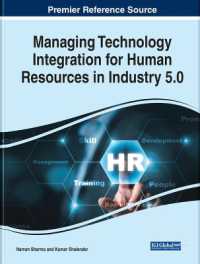- ホーム
- > 洋書
- > ドイツ書
- > Mathematics, Sciences & Technology
- > Earth Science
Full Description
This book presents the three pillars of Disaster Risk Management (DRM): communication, innovation, and science and technology. This book focuses on the use and innovation of space technology and communication for DRM in two specific areas: the Early Warning System (EWS) and the Disaster Information Management System (DIMS).







